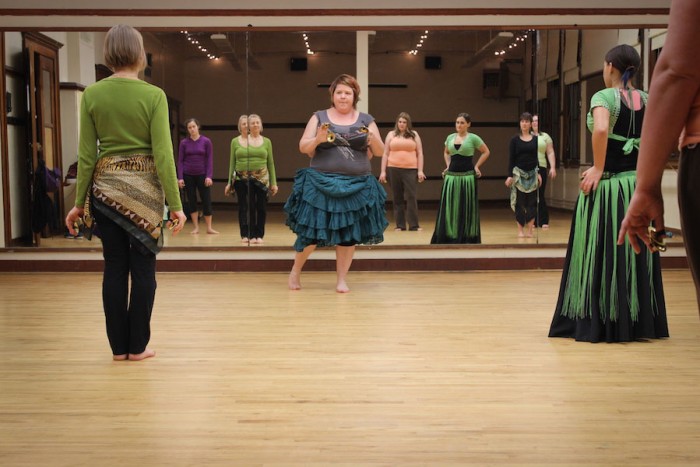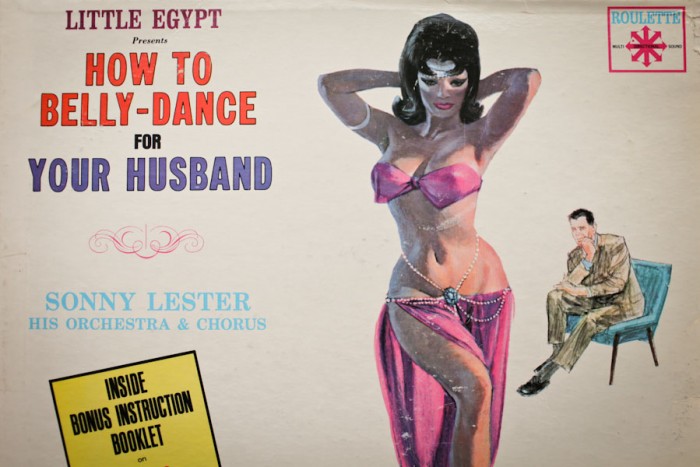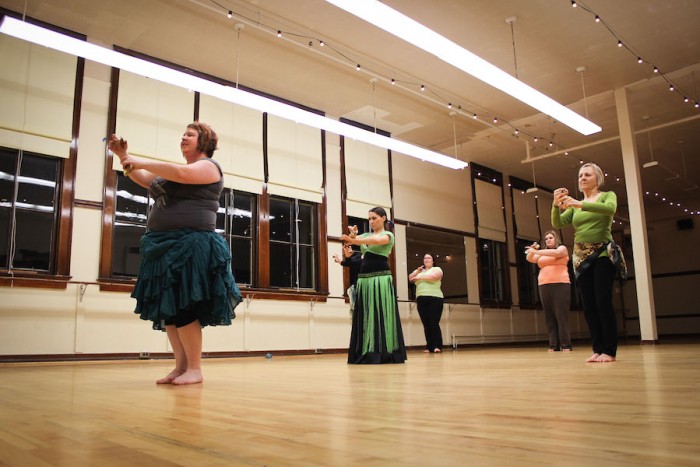
With white skin and a pixie haircut, Shay Moore would probably never be mistaken as an Arab woman.
But come March, she and the troupe of mostly white belly dancers she leads out of her Deep Roots Dance school will be showing off their moves at a belly dance festival in Seattle.
The origins of this style of dancing are much debated. Once known as Raqs sharqi (“Dance of the Orient”), belly dance is often said to have originated in Egypt or Algeria.
At the World Fair in Chicago in the 1893, the hip gyrations of a Middle Eastern dancer were a big hit with the crowds, and the term “belly dance” was coined. Since then trends of orientalized dancing in America have shifted and fused.
“Generally people today would tell you that it’s from Egypt, North African regions in particular. I don’t think anyone would argue that dance today is now a conglomeration of a lot of different cultural sources,” Moore explains, “so even if we could pinpoint the one source it came from, what it looks like today wouldn’t resemble anything like what it was that day.”
In 1987, American Tribal Style Belly Dance — the kind Moore teaches — was created in America as a fusion of dance techniques from North India, the Middle East, and Africa.
Moore says she always had a misconception about belly dance growing up, seeing it as a thing that insecure girls did to show off their bodies. Stereotypical images of belly dance often portray girls in bras and long skirts performing sexy dances for the entertainment of men — much like stripping.

Before Moore opened her own studio in Seattle, she was traveling down to Portland once a week to learn from one of few tribal dance experts in the Pacific Northwest. She fell in love with the dance style in 1998 and saw it’s popularity grow a few years later.
“I think a big boom came 2000 and 2004 maybe where people were like ‘I want to do what Shakira does, where do I do that?’” she says.
But the belly dancing boom in the U.S. has spawned it’s share of critiques. An article published on Salon last year suggested that it was the latest step in a long history of white appropriation of Middle Eastern culture:
“Arab women are not vessels for white women to pour themselves and lose themselves in; we are not bangles or eyeliner or tiny bells on hips. We are human beings. This dance form is originally ours, and does not exist so that white women can have a better sense of community; can gain a deeper sense of sisterhood with each other; can reclaim their bodies; can celebrate their sexualities; can perform for the female gaze.”
A commenter on the article responded saying “…art forms change and grow and multiply into other spaces as they come into the mainstream — you can’t really stop it from happening.”
That seems to characterize Moore’s approach.
She has taken advantage of something that is becoming mainstream and is letting it evolve. She dismisses the criticism saying she teaches dance to celebrate a culture, while mindfully respecting the roots of the dance style.

“We will have people from the Middle East in the audience who will come up in tears and saying ‘that felt like home, I am so excited to see people outside of our culture, taking an interest in our culture,’” she says with pride.
Alessandra Green, another belly dance teacher in Seattle, has a similar perspective:
“Regardless of where an art form may have originated from, I don’t believe that any one country or culture has an exclusive right or ownership over that art form. Art is universal and an expression of our humanity,” Green explained in an email. “As such, I personally believe that all humans have an equal right to appreciate and engage in all art forms.”
Because of the transformation belly dance has gone through, maybe it doesn’t really matter which culture it originated from, or who engages in it.
Moore says that although Americans like her are fusing the dance style, they’re doing so in a respectable way. She knows there will always be negative perceptions of belly dance in America, but she says she won’t let that stop her from doing and teaching what she loves.
The post Belly dance: appreciation or appropriation? appeared first on The Seattle Globalist.




















